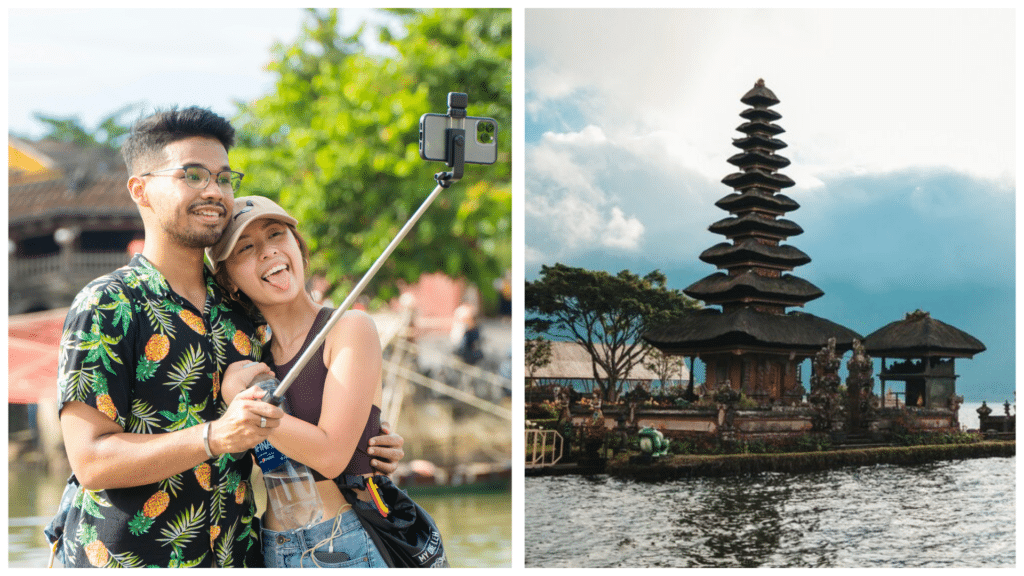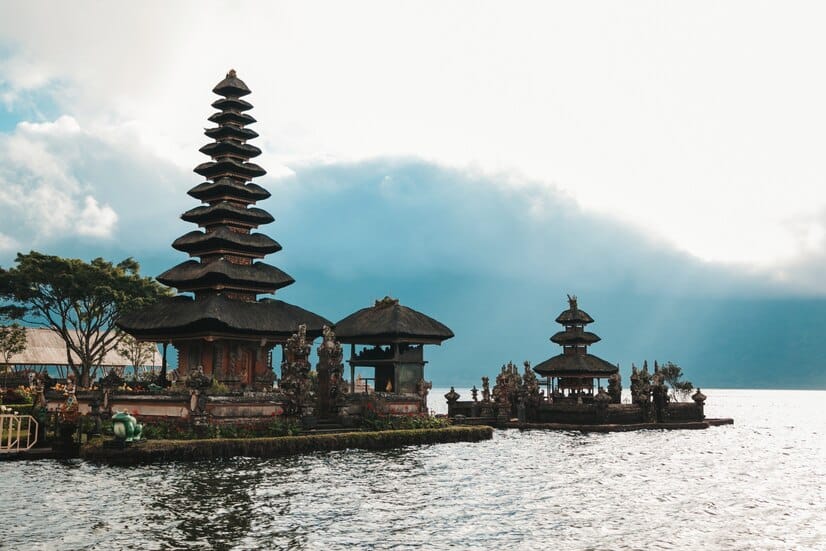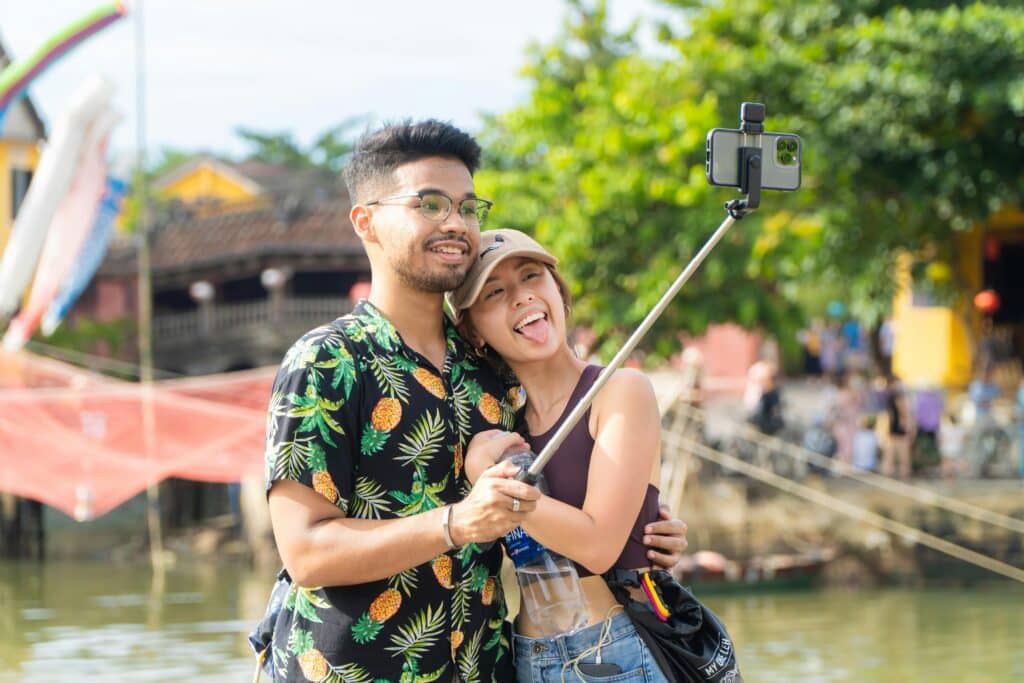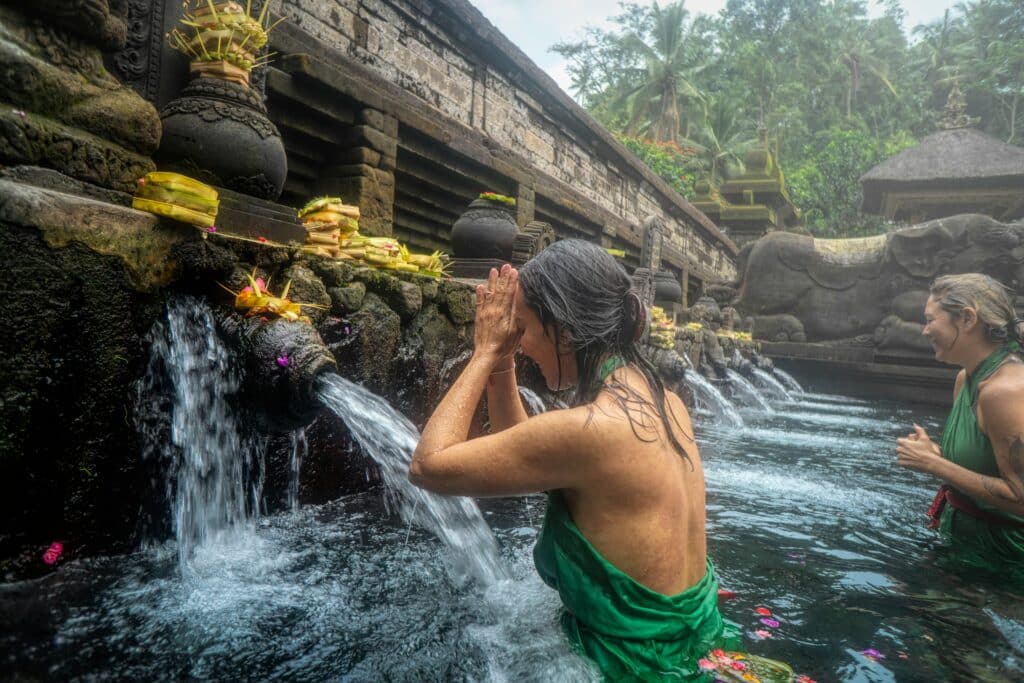A picturesque tropical island or a tourist-crowded hell hole? Here’s the truth about visiting the Indonesian island of Bali in 2024.

Unless you’ve been living under a rock or are one of the few people in this day and age who refrains from social media use, you’ll no doubt have seen the perfectly posed pictures of travellers looking effortlessly chic swinging over the Indonesian rice fields.
Or maybe you’ve seen that famous shot with a pearly white smile and a smoothie bowl in front of a colourful pink wall at one certain cafe. You know the one we mean…
This Indonesian island used to be a tropical paradise and spiritual hub of Hinduism and Buddhism in the Indian Ocean. But sadly, Instagram ruined Bali.
Bali back in the day – the history of this beautiful island

The westernmost of the Lesser Sunda Islands in the Indonesian archipelago, Bali is part of the famous Coral Triangle. A hub of marine biodiversity, this island and its surroundings are home to over 500 reef-building coral species.
Home to breathtaking natural sites, a rich cultural history, and a deep-rooted spiritualism, it’s not hard to see why Bali has attracted travellers from all across the globe.
Balinese culture has been strongly influenced by Indian, Chinese, and particularly Hindu culture, which can still be seen and experienced across the island to this day.
Home to beautiful mountains, active volcanoes, breathtaking waterfalls, and pristine blue waters dotted with coral reefs, the nature here is among some of the most beautiful in the world. It’s not hard to see why it’s known as the ‘Island of the Gods’.
Unfortunately, the days of Bali as a tropical paradise are long gone. Overtourism, Western influence, and Instagram ruined Bali, turning it into a capitalist tourist centre in the middle of Southeast Asia.
The rise of tourism in Bali – when the West takes over

The province of Bali is the main tourist destination in Indonesia, with over six million tourists visiting the island annually. Tourism here began to increase in the 1980s, and today tourism accounts for almost 80% of the island’s economy.
Having won numerous tourism awards throughout the early 2010s and featuring as a primary destination in Elizabeth Gilbert’s 2006 travel memoir Eat, Pray, Love, Bali steadily became a coveted destination, particularly among spiritually intrigued tourists.
With the rise of social media and the trend of capturing the idyllic Instagram shot that makes your life look like something from a storybook, Bali skyrocketed in popularity and captured the imaginations of people from all over the world.
To an extent, this had a positive impact on the island, boosting its economy with the influx of Western money. However, things have gone too far…
Instagram ruined Bali – not the spiritual paradise it used to be

The Instagram pictures make the island look like a serene and idyllic tropical island. However, that isn’t quite the case.
Today, the island has turned into an overcrowded tourist trap with expensive Western cafes, inauthentic cultural experiences, and perfectly posed Instagram shots that you have to wait hours in a queue to snap.
If you search online ‘Bali: Instagram vs Reality’, you’ll see a huge array of almost comical videos of how the image of the island portrayed by influencers online compares to reality.
For example, the Gateway to Heaven, or Sad Kahyangan Lempuyang Temple, one of Bali’s most iconic landmarks, has idyllic images splattered all over social media showing tourists standing between the structures with their reflection in the lake below.
However, the truth of this landmark is much different. During the high season, the queue can extend to four hours to get the famous picture. What’s more, the lake in front of the temple that has made this spot so famous doesn’t actually exist.
Yes, you read that right. The images you see are actually a clever camera trick curated by local guides and temple staff. They hold a mirror beneath the camera lens to create the reflected effect that looks like a glistening lake.
This phenomenon isn’t unique to the Gateway to Heaven. Rather, most of Bali’s most iconic landmarks are overcrowded with tourists and photographers charging extortionate fees to capture the perfectly posed Instagram shot.
Rising prices and disrespecting local cultures and traditions – the dark side of paradise

The perfectly-posed Instagram shots aren’t even the worst of it. When it comes to how Instagram ruined Bali, things get a lot darker.
By attracting wealthy Western tourists, prices on the island have skyrocketed, with huge corporations and Western hotel chains buying up land and property in the area, pricing out local residents whose families have lived on the island for generations.
Aside from that, many tourists to the area do not show respect for the local culture.
Between reckless behaviour, pollution and littering, disregard for religious monuments, and Westerners working illegally in the country without paying taxes, there are plenty of downsides to tourism that are negatively impacting the island and its people.
Thankfully, people are becoming more aware of the impact of their travels on local people, industries, and the environment. So, hopefully in the coming years, we’ll see a shift from this damaging Instagram-fuelled overtourism to which Bali has been inflicted.

